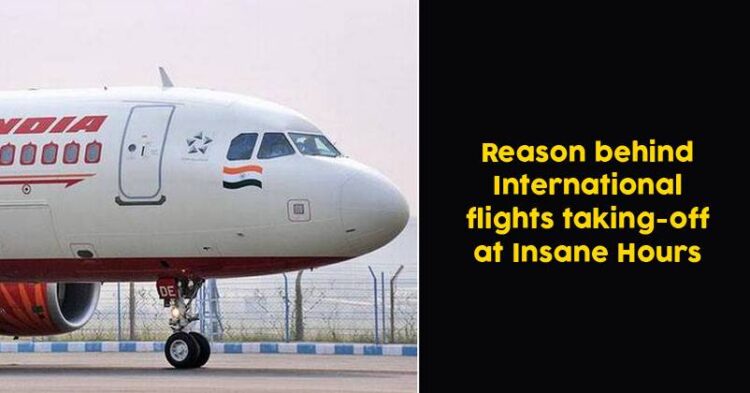Tired of wondering why most of the international flights from India are scheduled late at night? Well, here’s a list of reasons why.

Night Curfews
While India including a host of other countries like Singapore, Dubai, and Colombo, operate their airports 24/7, 365 days a year, a handful of countries such as the US, Switzerland and Germany and some airports in Australia follow a night curfew where they shut down for commercial operations between 11 pm and 5 am. They allow only emergency flights to land and take-off during this time.
The night curfews were introduced in the 1960s as a result of local protests about noise pollution at night. It was back in the day when aircraft engines were very noisy.
India Was Turned Down
When a bunch of countries including India approached the International Civil Aviation Organization (ICAO) in 2007 seeking a more equitable system as the night curfew was having a negative impact on aviation growth, their proposal was turned down.
Infrastructure Still Catching Up
While Indian aviation has grown dramatically over the years, airport infrastructure, essential for airline operations, has not kept pace. Currently, seven airports account for over 75 percent of the passengers carried by domestic airlines, with the metros seeing the maximum movement of passengers.
Not An Alien Concept
Incidentally, operating late-night flights is not a new concept in India. It started with a low-fare, late-night flight between Delhi and Mumbai and Delhi and Bangalore by Vayudoot in the late 1980s and early 1990s. The airline, which was later merged with Indian Airlines, leased a Boeing 757 from the Royal Nepal Air Corporation (RNAC), which was parked at night in Delhi, to launch late-night flights connecting the national capital to Mumbai and Bangalore. The aircraft returned to Delhi in the morning and RNAC operated its scheduled service between Delhi and Kathmandu.
This late-night connection was a boon for travelers in those days as Indian Airlines was the only airline flying within the country. It operated a limited number of flights, offering limited choice. The Vayudoot alternative allowed passengers to re-plan their day’s activity and fly for less. It was a better alternative than a train journey that would involve travel of up to a day, one way, between Delhi and Mumbai.
With more airlines and better air connectivity, this flexibility of finding appropriate and possibly cheaper fares has only improved.
















